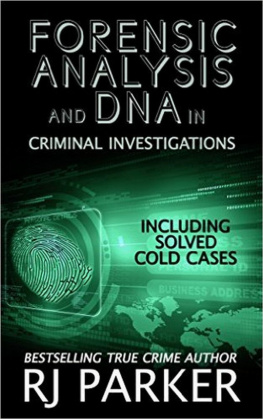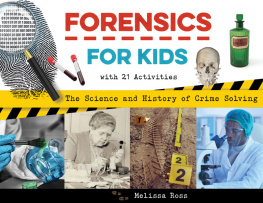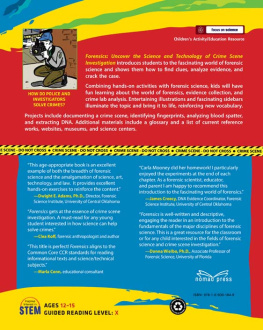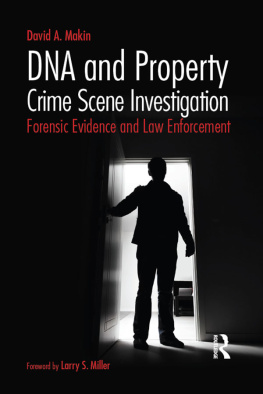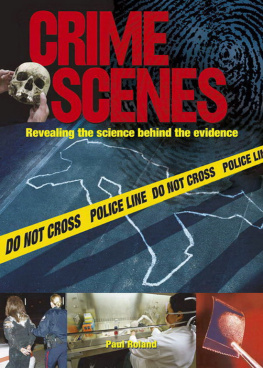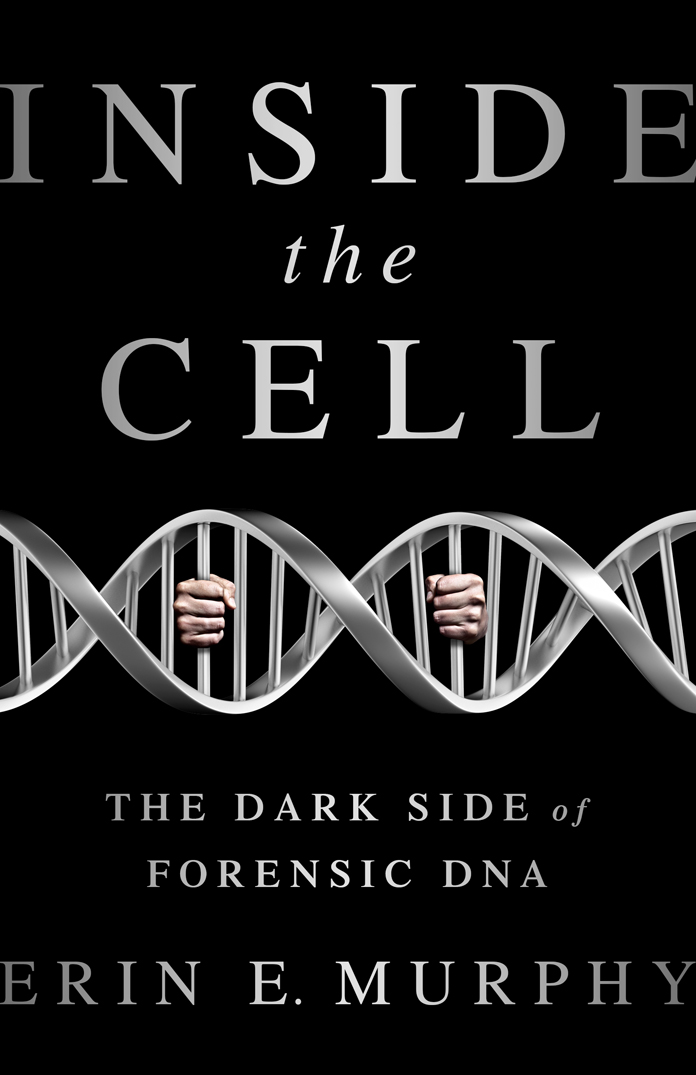Inside the Cell

Copyright 2015 by Erin E. Murphy
Published by Nation Books, A Member of the Perseus Books Group
116 East 16th Street, 8th Floor
New York, NY 10003
Nation Books is a co-publishing venture of the Nation Institute and the Perseus Books Group. All rights reserved. Printed in the United States of America. No part of this book may be reproduced in any manner whatsoever without written permission except in the case of brief quotations embodied in critical articles and reviews. For information, address the Perseus Books Group, 250 West 57th Street, 15th Floor, New York, NY 10107.
Books published by Nation Books are available at special discounts for bulk purchases in the United States by corporations, institutions, and other organizations. For more information, please contact the Special Markets Department at the Perseus Books Group, 2300 Chestnut Street, Suite 200, Philadelphia, PA 19103, or call (800) 810-4145, ext. 5000, or e-mail .
Designed by Jeff Williams
Library of Congress Cataloging-in-Publication Data
Murphy, Erin E. (Law teacher) author.
Inside the cell: the dark side of forensic DNA / Erin E. Murphy.
pages cm
Includes bibliographical references and index.
ISBN 978-1-56858-470-6 (e-book) 1. DNA fingerprintingLaw and legislationUnited States. I. Title.
KF9666.5.M87 2015
363.25'62dc23
2015020264
10 9 8 7 6 5 4 3 2 1
To Quinlan and Crosby, for sharing the first years of their lives with this book, and most of all to Jeremy, for sharing the rest of his with me.
CONTENTS
Guide
Forensic DNA testing has been hailed as a savior. It has led to over three hundred exonerations, including for over twenty innocent men sentenced to death. DNA testing has also resulted in the apprehension and conviction of some of the nations most dangerous repeat offenders, including serial attackers identified through DNA testing long after the trail from their victims had gone cold. And finally, by offering the criminal justice system a way of proving identity with unprecedented degrees of certainty, DNA analysis has closed innumerable cases that otherwise might have gone unsolved.
Yes, to be sure, DNA testing is a savior. The trouble is, no one likes to admit that even a savior can have flaws. Popular understanding of forensic DNA testing, also called DNA typing, paints it as an all but infallible technique. In the crime shows that dominate prime-time airwaves, forensic investigators work with the steely precision typically associated with surgeons or navy pilots. Technicians study crime scene evidence, fortified by sleek instruments galvanized by strikingly plausible technologies. Of course, the ridge line of the nail indicates whether the victim was left-or right-handed. Just look at the creases along the edge: they reflect the particular brand and size of nail clipper. A quick search reveals that this clipper was only sold in six shops in this city in the mid-1990sI think we can find our man!
There is something deeply reassuring about the sophistication and certainty depicted in these shows. Perhaps the comfort they offer traces to our longing to believe that we leave an impression on the world. It seems right that the microscopic traces of self left behind by criminals should be both so evident and so individualized. It affirms two of our own innate, but conflicting, desires. We can see ourselves as unique and complexas complicated as the whorls on our fingertips or the flecks in our irisesand yet at the same time, intelligible. Despite our complexity, we are all still capable of being known and understood by others. I leave fingerprints, therefore I am.
Whatever the reason, it is clear that forensic science is a popular dish, most often served without garnishes. But cracks have been slowly accumulating in this facade of scientific perfection. First, in September 2005, the Federal Bureau of Investigation (FBI) announced that it would stop offering bullet lead analyses. This method purports to match bullets recovered from a crime scene to those in possession of a suspect. But after having conducted roughly 2,500 of such tests since the 1980s,
Then, in 2009, the New Yorker published an article about Cameron Todd Willingham. Willingham was sentenced to death in Texas for setting a deadly fire, and the conviction rested largely on the conclusions of the fire investigators. Most of those conclusions were grounded in disproven bits of folk wisdom that actual fire science has since disavowed.
Lastly, the wave of exonerations across the nationover half of which are attributed at least in part to faulty forensic evidencebrought to light systemic problems with familiar forms of expert testimony, such as bite mark evidence, fiber and hair analysis, and other pattern evidence.
But even with increasing awareness of the problems that plague conventional forensic science, DNA typing has largely emerged unscathed. It has even been lionized in Science magazine in 2005 as the gold standard for forensic evidence.companies that perform genetic testing for recreational purposesare unlikely to believe that much harm can come from sharing their DNA sample with strangers interested in historical or medical research.
Generally speaking, this enthusiasm for DNA typing is not misguided, and it is not wrong. DNA typing is a marked advance over more primitive forensic methods. It does rely on scientifically established principles and mathematically sound statistics. And studying DNA has in fact revolutionized how we judge all scientific evidence in the criminal justice system.
But revolutionary does not mean infallible, and better does not mean faultless. Forensic DNA analysis is technical and it is complex. Yet it feels familiar and trustworthy because we encounter it in pop culture and in the medical context on a regular basis. Most people have little understanding of the difference between medical and criminal justice DNA tests, or what the government currently does or may in the future do with DNA. But as Peter Gill, founding father of forensic DNA testingcurrently a professor of forensic science at Oslo University and formerly a leading scientist with the United Kingdoms Forensic Science Servicehas acknowledged, There is little doubt... that misinterpretation of DNA profiling evidence may cause miscarriages of justice.
This book aims to complicate the narrative surrounding forensic DNA analysis by telling the tales of mistake, abuse, and misuse. It intends to situate DNA testing in the forensic context, to show how even a reliable scientific discipline can be pushed beyond its limits, corrupted, or fall prey to ordinary error. The exoneration cases have set the tone for popular views of DNA analysis in the criminal justice system, which is to view it as an unmitigated good. But, in fact, two lessons might be drawn from them. The first, well received, is that DNA testing is a transformative technology breakthrougha definitive way to separate the criminals from the wrongly accused. But the second lesson, too often overlooked, is that the same broken criminal justice system that created mass incarceration, and that has processed millions through its machinery without catching even egregious instances of wrongful conviction, now has a new and powerful weapon in its arsenal.
Forensic DNA methods are entering the same criminal justice system that we now know got away for decades with peddling faulty science as truth. We have learned that our criminal justice system has a propensity to push science beyond its justified limits, to neglect to adequately safeguard the integrity of evidence or the forensic testing process, to ignore systemic failures in the training and supervision of analysts, and to dismiss problems that arise as incidental or unrepresentative in the hope that they will simply go away. And while DNA science is better than traditional forensic techniques, the corrupting forces of the criminal justice system have little changed. Nearly all of the pathologies that led to the unfettered embrace of now-discredited bullet lead, arson, and hair methods are still in place in our criminal justice system today. Police, prosecutors, and public laboratory officials still shroud their methods and mistakes in secrecy, and defense lawyers still all too often lack the skill and resources needed to effectively challenge scientific evidence in court.


